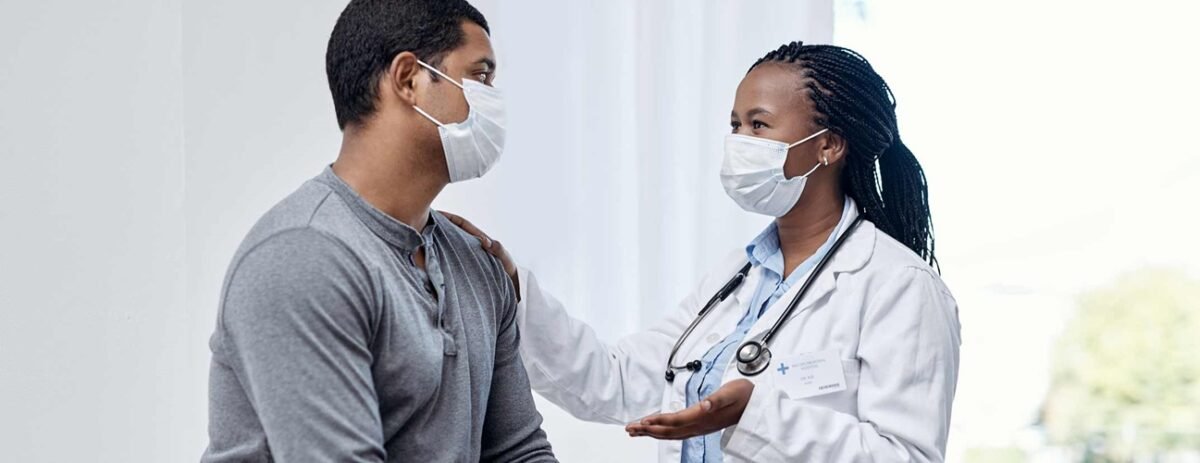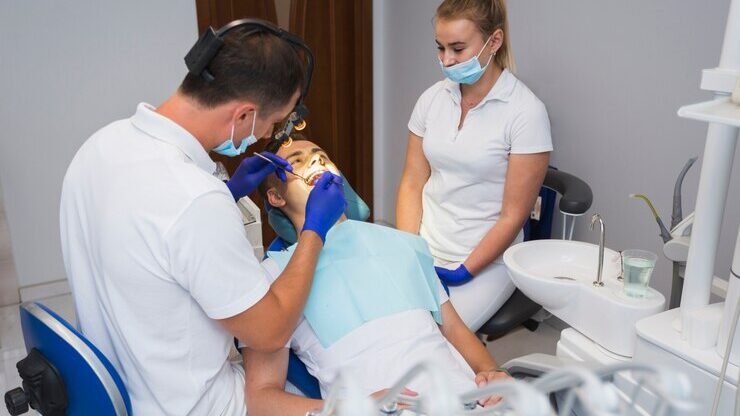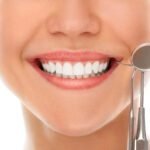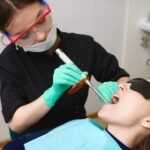Table of Contents
Heading 1: The Importance of Wearing Masks in Healthcare Settings


Wearing masks in healthcare settings is of utmost importance for the safety of both patients and healthcare providers. Masks act as a barrier against the transmission of infectious diseases, preventing the spread of harmful pathogens. They play a crucial role in infection control, especially in settings where individuals may be more vulnerable to infections.
In healthcare settings, masks help protect patient and staff safety by reducing the risk of respiratory droplets containing viruses or bacteria from being inhaled or spread through coughs, sneezes, or even speech. This is particularly crucial in dental clinics, where aerosol-generating procedures can increase the risk of disease transmission. By wearing masks, dentists, dental assistants, and other healthcare professionals create a safer environment for themselves and their patients. The use of masks also demonstrates a commitment to patient care and the overall well-being of the community.
Heading 2: Protecting Patient and Staff Safety


The safety of patients and staff is a top priority in any healthcare setting, and wearing masks plays a crucial role in protecting both parties. Masks act as a barrier against infectious diseases, filtering out harmful particles and preventing them from being inhaled or exhaled. By wearing masks, healthcare professionals can reduce the risk of transmitting infections to their patients, ensuring a safe and hygienic environment for everyone.
In addition to preventing the spread of infectious diseases, masks also serve as a constant reminder of the importance of maintaining proper hygiene practices. When patients and visitors see healthcare staff wearing masks, it sends a clear message that their safety is taken seriously. This can instill a sense of trust and confidence in the healthcare facility, knowing that necessary measures are being taken to protect their well-being. Moreover, masks serve as a visual cue for patients and visitors to follow suit and wear masks themselves, further contributing to the overall safety of the healthcare environment.
Heading 3: Preventing the Spread of Infectious Diseases


The spread of infectious diseases is a significant concern in healthcare settings, as it can lead to an increased risk of illness among patients and staff. One of the key ways to prevent the transmission of these diseases is by wearing masks. Masks act as a barrier, helping to prevent respiratory droplets from being released into the air when individuals talk, cough, or sneeze.
Studies have shown that wearing masks can significantly reduce the transmission of infectious diseases. For example, in a study conducted during the COVID-19 pandemic, researchers found that the use of surgical masks by healthcare professionals reduced the risk of transmission by approximately 85%. By wearing masks, healthcare providers can protect themselves and their patients, helping to create a safer environment.
In addition to protecting against respiratory droplets, masks also serve as a reminder to practice other infection control measures. When individuals see others wearing masks, it reinforces the importance of maintaining proper hand hygiene, practicing respiratory etiquette, and maintaining physical distance. Together, these measures work in harmony to reduce the spread of infectious diseases within healthcare settings, safeguarding the health and well-being of all individuals involved.
Heading 4: Understanding the Role of Masks in Infection Control
Masks play a crucial role in infection control within healthcare settings. They are a simple yet effective tool that helps prevent the spread of infectious diseases. By wearing masks, healthcare providers and staff create a barrier between themselves and patients, minimizing the risk of transmission of pathogens.
The primary function of masks is to prevent respiratory droplets, which may contain infectious agents, from being released into the air. When an infected individual talks, coughs, or sneezes, these droplets can travel through the air and potentially infect others. The use of masks significantly reduces the dispersion of respiratory droplets and limits the chances of transmission.
In addition to protecting others, masks also provide a level of personal protection for healthcare providers and staff. By wearing masks, they decrease the risk of inhaling respiratory droplets containing infectious agents, thus reducing their own chances of contracting a disease. This is particularly important in healthcare settings where patients with various illnesses are treated and where the risk of exposure is higher.
While masks are an effective tool for infection control, it is important to note that they should be used in combination with other preventive measures, such as proper hand hygiene and maintaining physical distance. Masks alone cannot guarantee complete protection, but they are an essential component of a comprehensive infection control strategy in healthcare settings.
Overall, understanding the role of masks in infection control is critical for healthcare providers and staff. By consistently wearing masks and following recommended guidelines, they contribute to the safety and well-being of both patients and themselves. The use of masks, in conjunction with other preventive measures, helps create a safer healthcare environment and reduce the transmission of infectious diseases.
Heading 5: Types of Masks Recommended for Healthcare Settings
In healthcare settings, wearing the appropriate type of masks is crucial for both the protection of healthcare professionals and the prevention of the spread of infectious diseases. There are several types of masks recommended for use in healthcare settings, each with its own level of protection and recommended usage.
The most commonly used masks in healthcare settings are surgical masks. These masks are disposable and provide a physical barrier between the wearer’s mouth and nose and potential contaminants in the environment. Surgical masks are designed to capture large droplets and prevent them from being released into the air. They are typically made of multiple layers of material, such as polypropylene, and are secured behind the ears with elastic bands.
Another type of mask recommended for healthcare settings is the N95 respirator. N95 respirators are designed to filter out at least 95% of airborne particles, including those as small as 0.3 microns in size. These masks are more tightly fitted than surgical masks and require a proper seal to be effective. N95 respirators are often used in situations where there is a high risk of exposure to infectious diseases, such as during aerosol-generating procedures or when caring for patients with respiratory illnesses like tuberculosis.
It is important to note that the choice of mask depends on the specific situation and the level of protection required. Healthcare professionals should follow the guidelines provided by their facility and ensure that they are using the appropriate type of mask for their specific needs. By using the correct type of mask, healthcare professionals can help protect themselves, their patients, and their colleagues from the spread of infectious diseases.
Certainly! Here is a table that summarizes the types of masks recommended for healthcare settings:
| Type | Description |
|---|---|
| N95 respirators | N95 respirators are tight-fitting respirators that filter out at least 95% of particles in the air, including large respiratory droplets and aerosols. They are recommended for use in healthcare settings where exposure to airborne particles is a concern1 |
| Surgical masks | Surgical masks are loose-fitting disposable masks that protect the wearer’s nose and mouth from contact with droplets, splashes, and sprays that may contain germs. They are recommended for use in healthcare settings to protect patients and healthcare workers from the spread of infection1 |
| Cloth masks | Cloth masks are made of multiple layers of fabric and can be washed and reused. They are recommended for use in community settings where social distancing measures are difficult to maintain, such as grocery stores and public transportation1 |
Heading 6: Proper Mask Usage for Patients and Visitors
Proper mask usage is crucial for patients and visitors in healthcare settings, especially in the midst of the ongoing pandemic. Wearing a mask not only protects oneself but also safeguards the health and well-being of those around us. When arriving at a healthcare facility, it is essential to adhere to the guidelines provided by the healthcare staff regarding mask usage.
Firstly, it is important to choose the right type of mask. The Centers for Disease Control and Prevention (CDC) recommends the use of medical masks, such as surgical masks or N95 respirators, in healthcare settings. These masks are designed to filter out airborne particles and provide a higher level of protection compared to cloth masks. Patients and visitors should avoid wearing masks with valves, as they do not effectively prevent the spread of respiratory droplets. Additionally, it is essential to ensure that the mask covers both the nose and mouth completely, with no gaps or openings.
Furthermore, proper mask hygiene is crucial to maintain its effectiveness. Patients and visitors should refrain from touching the mask once it is on, as this can contaminate the mask and increase the risk of infection transmission. If one needs to adjust or remove the mask temporarily, it is important to clean their hands with soap and water or use hand sanitizer before and after touching the mask. Additionally, masks should be replaced if they become damp, soiled, or damaged. It is also advisable to dispose of single-use masks properly, following the guidelines provided by healthcare facilities.
References:
– Centers for Disease Control and Prevention. (2021). Considerations for Wearing Masks. Retrieved from https://www.cdc.gov/coronavirus/2019-ncov/prevent-getting-sick/masks.html
Heading 7: Ensuring a Secure and Comfortable Fit
A proper fit is essential when it comes to wearing masks in healthcare settings. Ensuring a secure and comfortable fit not only enhances the effectiveness of the mask but also promotes compliance among patients and staff. It is important to note that a mask that does not fit correctly may pose a risk, as it can allow for the entry of pathogens or compromise the protective barrier.
When selecting a mask, it is crucial to consider the size and shape of the face. Masks should cover both the nose and mouth securely, without gaps that could allow air to escape or enter. To achieve a secure fit, masks with adjustable straps or nose clips can be utilized. These features allow for customization, accommodating different face shapes and sizes.
In addition to a secure fit, comfort is another important factor to consider. Masks that are uncomfortable can lead to frequent readjustment or removal, which may increase the risk of contamination. Opt for masks made of soft, breathable materials to maximize comfort during extended use. It is also essential to ensure that the mask does not obstruct vision or impede breathing, as this can hinder the wearer’s ability to perform their duties effectively.
By prioritizing a secure and comfortable fit, healthcare settings can promote proper mask usage while maintaining the safety of both patients and staff.
Heading 8: The Correct Way to Put on a Mask
To ensure the utmost protection and effectiveness, it is important to properly put on a mask in healthcare settings. The correct way to put on a mask involves a few key steps that healthcare providers and individuals should follow.
Firstly, it is essential to wash your hands thoroughly with soap and water or use hand sanitizer before touching the mask. This helps to minimize the risk of contamination. Once your hands are clean, hold the mask by the ear loops or ties, avoiding touching the front of the mask. Position the mask over your nose and mouth, ensuring it covers both areas completely.
Next, secure the mask by tying the loops behind your ears or around the back of your head, depending on the type of mask being used. Adjust the mask to fit snugly against the sides of your face, leaving no gaps. It is crucial to ensure a secure and comfortable fit to maximize the mask’s effectiveness.
Remember to avoid touching the mask while wearing it, as this can increase the risk of contamination. If you need to adjust or remove the mask, wash your hands thoroughly before doing so. Following these steps consistently will contribute to a safer healthcare environment and protect both patients and healthcare providers.
Heading 9: Removing Masks Safely and Hygienically
Removing masks safely and hygienically is crucial to minimize the risk of contamination and ensure proper infection control in healthcare settings. When it comes to taking off a mask, it should be performed in a careful manner to prevent any potential spread of pathogens.
First and foremost, before removing the mask, healthcare providers should perform hand hygiene using soap and water or an alcohol-based hand sanitizer. This step helps eliminate any potential pathogens that might have accumulated on the hands during the mask-wearing period. It is essential to ensure that hands are dry before proceeding to remove the mask.
To remove the mask, start by grasping the ear loops or ties without touching the front of the mask. Gently pull the loops or untie the ties and remove the mask from your face. Avoid touching the front of the mask as it may be contaminated. Discard the used mask immediately in a designated waste bin and perform hand hygiene again using the same procedures. By following these steps, healthcare providers can effectively remove masks in a safe and hygienic manner, reducing the risk of cross-contamination and promoting proper infection control practices.
Heading 10: Proper Hand Hygiene Before and After Mask Handling
Proper hand hygiene is essential in healthcare settings, especially before and after handling masks. Hand hygiene refers to the thorough cleaning of hands using soap and water or an alcohol-based hand sanitizer. It plays a crucial role in reducing the transmission of infectious diseases and protecting both patients and healthcare workers.
Before handling a mask, it is essential to ensure that your hands are clean. Begin by washing your hands with soap and water for at least 20 seconds, making sure to cover all surfaces – including the palms, fingers, back of hands, and fingertips. If soap and water are not readily available, an alcohol-based hand sanitizer with at least 60% alcohol can be used as an alternative. Rub your hands together until they are dry. By practicing proper hand hygiene before mask handling, you can minimize the risk of introducing pathogens onto the mask’s surface.
After handling a mask, it is equally important to clean your hands to avoid cross-contamination. Remove the mask carefully, avoiding touching the inside or outside surfaces. Once the mask is safely removed, perform hand hygiene again using the same steps mentioned earlier. This ensures that any potential pathogens present on the mask do not transfer to your hands or other surfaces. Regularly practicing proper hand hygiene before and after mask handling is a simple yet effective measure that contributes significantly to infection control in healthcare settings.
Heading 11: Addressing Common Misconceptions about Mask Wearing
There are several common misconceptions surrounding the wearing of masks that need to be addressed. One misconception is that wearing a mask can lead to oxygen deprivation. However, numerous scientific studies and experts have debunked this claim. Masks are designed to allow for adequate airflow while still providing a barrier against respiratory droplets. In fact, the World Health Organization (WHO) states that prolonged use of medical masks does not lead to oxygen deficiency in healthy individuals. It is important to note that masks should be worn correctly and replaced when they become damp or dirty to ensure optimal effectiveness.
Another misconception is that wearing a mask only protects the wearer, ignoring the importance of protecting others. While masks do offer some level of protection for the wearer by reducing the risk of inhaling respiratory droplets, their primary purpose is to prevent the spread of infectious diseases to others. This is particularly important in healthcare settings where vulnerable patients may be present. By wearing a mask, individuals contribute to the overall safety and well-being of their patients and colleagues.
It is crucial to address these common misconceptions about mask wearing to promote accurate information and encourage compliance. The scientific evidence overwhelmingly supports the use of masks in healthcare settings to prevent the spread of infectious diseases. By understanding the role of masks and dispelling these misconceptions, we can create a safer and healthier environment for all.
Heading 12: Educating Patients on the Importance of Compliance
Education plays a crucial role in ensuring the compliance of patients when it comes to wearing masks in healthcare settings. It is important for healthcare providers to take the time to educate their patients on the importance of mask usage and the potential consequences of non-compliance. By providing clear and concise information, patients can understand how wearing masks can protect both themselves and others.
One key aspect to emphasize when educating patients is the role masks play in preventing the spread of infectious diseases. Masks act as a barrier that can help to block respiratory droplets that may contain viruses or bacteria. By wearing a mask, patients can significantly reduce the risk of transmitting or contracting these pathogens. It is crucial to ensure that patients understand that by wearing a mask, they are not only protecting themselves but also their loved ones and the community as a whole.
Heading 13: Guidelines for Healthcare Providers and Staff on Mask Usage
In healthcare settings, the correct usage of masks is crucial for the safety and well-being of both patients and staff. Guidelines have been established to ensure that healthcare providers and staff properly utilize masks to minimize the risk of infection transmission and maintain a safe environment.
First and foremost, it is important to choose the appropriate type of mask for the specific healthcare setting. Masks should provide a high level of filtration and fit securely over the nose and mouth. N95 respirators are recommended for situations where there is a higher risk of exposure to airborne particles, such as during aerosol-generating procedures. Surgical masks, on the other hand, are suitable for general use and help to prevent the spread of respiratory droplets.
Once the appropriate mask is selected, it is crucial to wear it correctly. Before donning a mask, healthcare providers and staff should perform proper hand hygiene to prevent contamination. The mask should be placed over the nose and mouth, covering both areas completely. Adjustments should be made to ensure a snug and comfortable fit, with no gaps around the edges. Avoid touching the mask while it is being worn and change it immediately if it becomes wet or visibly soiled.
When removing the mask, it is equally important to follow proper procedures to minimize the risk of contamination. Again, hands should be thoroughly cleaned before starting the process. The mask should be removed by grasping the ear loops or ties, avoiding contact with the front surface. Discard the used mask in a designated receptacle and perform hand hygiene once again.
Adhering to these guidelines promotes infection control and reinforces the commitment of healthcare providers and staff to ensure the safety and well-being of patients and themselves. By following proper mask usage, the spread of infectious diseases can be minimized in healthcare settings, protecting the health of all individuals involved.
Can healthcare providers reuse masks in healthcare settings?
No, healthcare providers should not reuse masks in healthcare settings. Masks should be discarded after each use to prevent the spread of infectious diseases.
What are the types of masks recommended for healthcare settings?
The types of masks recommended for healthcare settings include N95 respirators, surgical masks, and procedural masks. These masks provide different levels of protection and are chosen based on the specific healthcare task being performed.
How should patients and visitors properly use masks in healthcare settings?
Patients and visitors should ensure a secure and comfortable fit by covering their nose, mouth, and chin completely with the mask. They should follow the healthcare provider’s instructions on when and how long to wear the mask.
What is the correct way to put on a mask?
When putting on a mask, healthcare providers and staff should wash their hands with soap and water or use hand sanitizer before handling the mask. They should then place the mask over their nose, mouth, and chin, ensuring a snug fit and avoiding touching the front of the mask.
How should masks be removed safely and hygienically?
Masks should be removed by grasping the ear loops or ties and avoiding touching the front of the mask. Healthcare providers and staff should dispose of single-use masks immediately after removal and perform hand hygiene afterwards.
Is hand hygiene necessary before and after mask handling?
Yes, proper hand hygiene is essential before and after mask handling. Healthcare providers and staff should wash their hands with soap and water for at least 20 seconds or use hand sanitizer to ensure cleanliness.
What are some common misconceptions about mask wearing?
Some common misconceptions about mask wearing include the belief that masks can suffocate or cause oxygen deprivation. Masks are designed to allow for proper airflow while still providing protection against infectious diseases.
How can healthcare providers educate patients on the importance of compliance with mask wearing?
Healthcare providers can educate patients on the importance of compliance by explaining the role of masks in preventing the spread of infectious diseases and emphasizing the protection it provides to both patients and staff.
Are there specific guidelines for healthcare providers and staff on mask usage?
Yes, there are specific guidelines for healthcare providers and staff on mask usage. These guidelines may include protocols for mask selection, proper fit, usage duration, and disposal to ensure effective infection control measures are followed.




